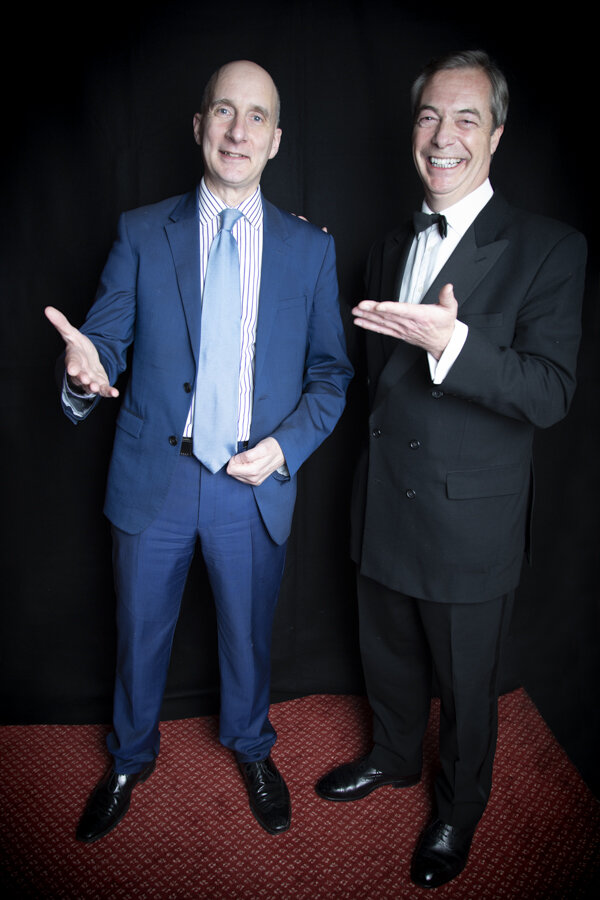Photography
The time is now for #TheHug Project
Hugs. I’ve been thinking about them a lot over the last week. The kernel of an idea about a hug photography project has been running around in my head for some time, but without a commissioner, or a client, sometimes the kick into action needs to come from somewhere else. In this case, it was a lucky coincidence. I completed a couple of big commissions recently, freeing up a little time for project development. At the same time, a dear friend generously offered to help me manage a social media campaign. I have also felt genuinely motivated to do something to combat the increasingly toxic political environment we find ourselves in. The time is now. #TheHug Project must happen.
#TheHug Project aims to bring together people who disagree on important and interesting issues to hug. It’s as simple and as difficult as that. Every time I start reading a Twitter chat, or the comments on a news website, I feel increasingly desperate about how polarised we are becoming. I wonder how we can move forward on the big challenges of the day, if we can’t get along.
The list of ‘hot potato’ topics is ever increasing: climate change and Brexit go without saying, but we’re also struggling with questions of immigration, gender, race, religion, sport, policing, medicine, science, agricultural methods, nutrition and so on. The question on my mind is - are we really as divided as we seem, or do we actually have, as the saying goes, “more in common”?
As a portrait artist, I’m driven by two key aims. One is to make beautiful images and the other is for my work to have a positive impact. With every job I take and every project I embark upon, I hope to fulfil these aims.
In the case of #TheHug Project, my starting point was realising that hugs make great pictures. The entangling of two human bodies into one single entity can happen in so many different ways. Visually, I find it a fascinating subject. Then I began to think that my camera could help bring people together - to hug - and build some important bridges. The hug might create a pause that would spark a new idea or a change of course. Just maybe.
Next, I started researching the impact of hugging on the human psyche and I became even more interested. Hugging can improve your health, your immune system and your mood. Researchers have also found that hugging can make you feel better about conflict. Could this be just what society needs? Hug therapy.
But so far, I have found it difficult to persuade people to take part in the project.
One of my first opportunities to photograph #TheHug came a few months ago at the Oxford Student Union. The Union reps thought #TheHug was a great idea and suggested that I photograph the people who were participating in their weekly debate. It so happened, that the debaters that week were Nigel Farage and Andrew Adonis; an ardent Brexiteer and equally ardent Remainer. It turns out, that if you ask two passionate political opponents, out of the blue, to hug for a camera, they are pretty reluctant to cooperate. Farage did manage to give Adonis a pat on the shoulder, but that was it. Everyone left, myself included, feeling very awkward indeed.
I have spoken to lots of people this week about the prospect of hugging for my project and there are some common negative responses:
The person who I disagree with doesn’t actually know how strongly I feel and so suggesting a hug would highlight something that I would rather brush under the carpet.
I really don’t want to hug the person who I disagree with.
I can see I am going to have to work a bit harder at my pitch this week.
However, it has been fun so far and I’m not too disheartened. I have managed to get a mother to hug her daughter for the camera. That one was easy and I think resulted in a wonderful picture. My husband hugged our son. Also easy. Up next, I have a doctor who has agreed to hug a homeopath. They were careful to point out that doctors and homeopaths are not “principally in opposition”. I think it will often be true that a disagreement is very nuanced and in fact this highlights an important difference between real life interactions and those on social media. Life isn’t black and white, and when we are forced to consider each other’s point of view up close, people will often admit that the difference is not as big as it may seem at first glance.
I also discovered the campaign Project Divided this week; Two millennials in the US who are trying to work out how to bring their own polarised nation together. They use a great expression, which I think is very relevant to #TheHug Project - “it’s harder to hate up close”. If only we can persuade a few more people to get close to those they disagree with. I’m working on it.
Andrew Adonis and Nigel Farage not doing #TheHug
